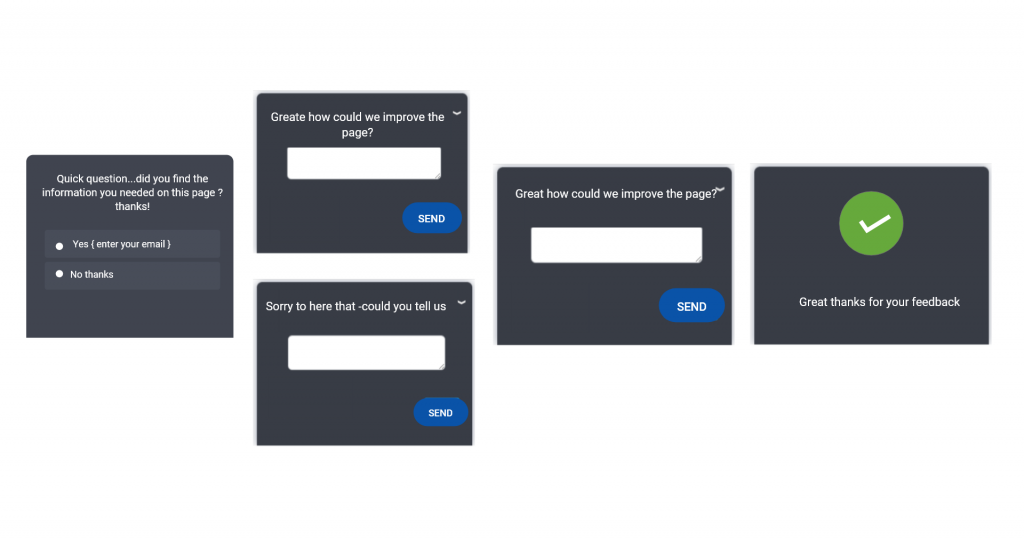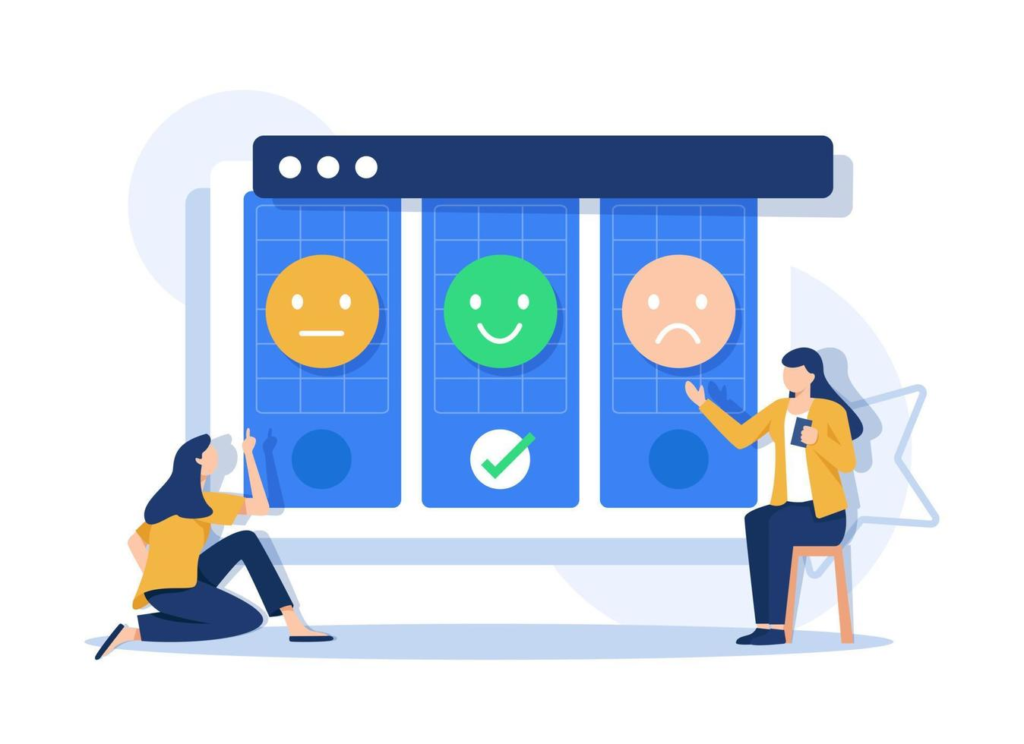In the dynamic world of Software as a Service (SaaS), understanding the intricacies of user experience (UX) can mean the difference between a thriving product and one that languishes unused.
Businesses often struggle to pinpoint what keeps users engaged, satisfied, and, most importantly, returning.
The problem lies not in a lack of data but in gathering the right kind of actionable insights. Without knowing what your users truly need and experience, you could be flying blind.
That’s precisely where our blog steps in as your guiding light. Armed with the “25 Best User Experience Survey Questions for SaaS Insights,” we offer a lifeline.
This article doesn’t just illuminate the path to user-minded product development; it provides the map and the compass needed to navigate the intricate terrain of user preferences.
Incorporating these targeted survey questions into your feedback strategy will unlock the door to invaluable insights that foster a resonant user experience — skyrocketing your product’s success rate in today’s competitive market.
What are the user experience words ending in UX surveys?
User experience surveys, often referred to by the familiar suffix -UX, consist of queries designed to elicit clear and actionable feedback about how individuals interact with a SaaS product. The ultimate aim is to identify pain points, understand user needs, and gauge overall satisfaction. Here are a few examples of these survey queries that can capture vital UX insights:
- Ease of Use:
- How would you rate your overall ease of navigating our platform?
- On a scale from 1 to 10, how intuitive did you find the user interface?
- Functionality:
- Were there any features or functions you found particularly cumbersome or confusing?
- When using our service, can you highlight a tool or feature that enhances your productivity?
- Satisfaction:
- What aspect of our product are you most satisfied with?
- To what extent does our service meet your expectations?
How to conduct surveys for words ending in UX
Conducting effective user experience (UX) surveys is an art that requires careful planning and strategic execution. Here’s a step-by-step guide to ensure the words ending in “UX” provide a wealth of actionable insights:
Planning Your UX Survey
- 1. Define Your Objectives:
Before crafting your survey, it’s critical to pinpoint exactly what you’re hoping to learn. Do you want to gauge the usability of your service, uncover areas for improvement, or measure satisfaction levels?
- 2. Choose the Right Tools:
Select survey platforms that offer a seamless experience for users and simplify the analysis for you, such as Qualtrics, SurveyMonkey, or Google Forms.
Crafting Your Survey
- 1. Start with Simple Demographics:
This contextual information can add depth to your data, informing you if experiences differ across various user types.
- 2. Use Clear and Concise Wording:
Questions should be straightforward to avoid confusion. Ambiguity can skew results and render your data less actionable.
Examples of Well-Structured UX Survey Questions
- Usability:
- How user-friendly do you find our platform on a scale from 1 to 5?
- What action within our service did you find less intuitive than expected?
- Reliability:
- How often do you encounter errors or glitches while using our product?
- What part of the service do you rely on most, and why?
- Engagement:
- Describe a feature that keeps you coming back to our product.
- How well does our service integrate into your daily routine?
Distributing and Collecting Responses
- 1. Reach Out at the Right Time:
Timing is everything; engage users after they’ve had a meaningful interaction with your service.
- 2. Incentivize Participation:
A small reward can greatly increase response rates and provide more comprehensive data.
Effective strategies for conducting surveys on words ending in UX
Understanding user experience (UX) through surveys can dramatically improve SaaS products. To ensure the collection of high-quality, actionable insights, here are 7 Best Practices when conducting UX surveys:
Be Specific and Targeted
- 1. Tailor Questions to Your Product:
Each question should be relevant to specific features or functions of your service. For example, “How efficient is the checkout process on our app?”
Ensure Anonymity and Confidentiality
- 2. Guarantee Privacy:
Assure users that their responses are confidential, encouraging honest feedback.
Keep It User-Centric
- 3. Focus on the User’s Experience:
Phrase questions to reflect the user’s perspective, such as “What feature do you find most useful for your daily tasks?”
Limit Survey Length
- 4. Respect the User’s Time:
A survey should take no more than 5–10 minutes to complete to avoid drop-offs and maintain engagement.
Ask Open-Ended Questions
- 5. Invite Elaboration:
While rating scales are useful, open-ended questions like “What improvements would you suggest for our project management tool?” can provide deeper insights.
Optimize for Mobile
- 6. Ensure Mobile-Friendliness:
Many users will complete surveys on their phones, so the survey interface must be responsive and easy to navigate on a small screen.
Follow Up on Feedback
- 7. Close the Loop:
After the survey, inform participants how their feedback will be used. If possible, provide updates on changes or improvements made because of their suggestions.
User experience survey words ending in UX templates- UX survey types
Leveraging UX Survey Templates
Effectively conducting user experience surveys is crucial for gathering and applying that data to enhance your product. Tailored survey templates can streamline the process and ensure that each word ending in “UX” translates to powerful feedback. Below are examples of UX survey types that utilize our ‘UX’ theme and can be adapted to any product:
Usability UX Survey
- Ease of Use:
- What was your first impression of the user interface?
- How would you rate the learning curve when starting to use our product?
- Navigation and Flow:
- Did you find it easy to locate the features or information you needed?
- Were there any parts of our platform where you felt lost or confused?
Performance and Reliability UX Survey
- Consistency:
- How consistently does our product perform to your expectations?
- Discuss a time when you felt let down by our service.
- Speed and Efficiency:
- Rate the responsiveness of our app during high-traffic periods.
- Describe your experience with load times and performance hiccups you’ve encountered.
Satisfaction and Loyalty UX Survey
- Overall Contentment:
- How satisfied are you with the value our product provides?
- What words would you use to describe your level of satisfaction with our platform?
- Repeat Usage:
- Identify a factor that influences your decision to continue using our product.
- What improvements can we make to turn you into a brand ambassador?
Feature-Specific UX Survey
- Functional Utility:
- Which feature do you consider most beneficial for completing your work?
- Is there a function you believe is lacking or could be executed better?
- Innovative Suggestions:
- Give an example of a feature you’ve seen elsewhere that you’d love to incorporate into our product.
- What innovative idea do you have that could revolutionize your experience with our service?
Engagement and Integration UX Survey
- Daily Integration:
- How seamlessly does our product fit into your daily routine?
- What, if any, friction points do you experience when incorporating our tool into your workflow?
- User Involvement:
- Tell us about a feature or aspect of our product that excites you the most.
- How can we modify our service to make it an indispensable part of your day?
By deploying these UX survey types with focused questions about usability, reliability, satisfaction, features, and engagement, firms can gain phenomenal insights that resonate with their user base. It’s about crafting a survey experience that feels as intuitive and thoughtful as the product you aim to perfect.
User persona survey questions
Understanding User Personas Through Targeted Questions
Building detailed user personas is central to creating a SaaS product that truly resonates with your target audience. To construct these personas, you must delve deep into your users’ characteristics, behaviors, and motivations. Here is a structured set of survey questions designed to help flesh out user personas:
- Demographic Information:
- What is your age range? (e.g., 18-24, 25-34, etc.)
- Can you specify your occupational field and role?
- Describe your level of education. (e.g., high school diploma, bachelor’s degree, etc.)
- Technical Proficiency:
- On a scale from 1 to 10, how would you rate your comfort level with using new technology?
- What devices do you use daily? (e.g., smartphone, laptop, tablet, etc.)
- Goals and Challenges:
- What are the main objectives you are trying to achieve with our product?
- Can you tell us about any obstacles or frustrations you face in your current workflow?
- Product Interaction and Preferences:
- How often do you use our product, and in what context? (e.g., daily for project management, weekly for data analysis, etc.)
- What are the three things you like most about our service?
- Are there any features you feel are underutilized or overlooked? Why do you think that is?
- Feedback and Future Improvements:
- What would be the one thing you would change about our product if you had the chance?
- Are there any additional services or features that you wish were offered?
- Brand Relationship:
- How would you describe your relationship with our brand? (e.g., loyal, satisfied, neutral, etc.)
- What motivates you to continue using our product over competitors’?
These questions, alongside insightful analysis, can guide product teams in creating user personas that are not just hypothetical users but lifelike characters with specific needs and behaviors. This approach ensures that the product features and developments are aligned with the actual users, paving the way for a more successful and user-focused SaaS solution.
General UX feedback survey questions
Gathering Comprehensive UX Feedback
Efficiently collecting feedback on user experience is vital to understanding the strengths and weaknesses of a product and informing future development. Below, we present a selection of General UX Feedback Survey Questions that will help uncover valuable user insights:
- Ease of Interaction:
- On a scale from 1 to 10, how would you gauge the intuitiveness of our user interface?
- Can you pinpoint any elements that significantly enhance or hinder your interaction with our product?
- Aesthetic Appeal:
- How does the visual design of our product affect your overall experience?
- Share an aspect of the product design that stood out to you, either positively or negatively.
- Emotional Reaction:
- Describe how you feel when you use our product. Are there any strong emotions it elicits, such as frustration, satisfaction, or confusion?
- What feature or aspect of our product most contributes to these feelings?
- Support and Resources:
- Please rate the effectiveness of our customer support and resource materials, like FAQs or tutorials.
- Relate an instance where you sought help and whether the outcome was successful.
- Comparison with Expectations:
- What were your expectations before initially using our product, and how does the reality compare?
- If there was one misconception you had about our product before using it that has now been cleared up, what was it?
- Longevity and Adaptation:
- How has your perception of the product changed over time with repeated use?
- What changes or improvements have you noticed, and what areas still need attention?
- Word of Mouth Potential:
- How likely are you to recommend our product to a friend or colleague? Please elaborate on your reasoning.
- If you were to pitch our product to someone, what key points would you focus on?
Collecting and integrating user feedback through these questions will provide valuable perspectives beyond mere usability, encapsulating the entire user experience. This feedback can lead to product enhancements that meet and exceed user expectations when analyzed and acted upon.
UX research survey questions
In-depth Exploration with UX Research Survey Questions
UX research surveys are a crucial tool for digging into the hows and whys of user behavior, ultimately driving meaningful improvements in the product design process. To gain a nuanced understanding of user experiences, the following questions have been crafted to elicit detailed responses that can inform future innovation:
- User Journey Mapping:
- Can you walk us through a typical session with our product, highlighting moments of ease or difficulty?
- Describe when our product saved you time or hassle in your daily tasks. What feature was instrumental in this?
- Perception and Expectation:
- How does our product align with your initial perception after you’ve used it for a while?
- Reflect on your preconceived notions about our product and how they have evolved since.
- Feature-Specific Feedback:
- Which feature do you find most beneficial, and how do you commonly use it?
- If you could add a feature you’ve seen in another product, what would it be and why?
- Behavioral Impact:
- Has our product changed the way you approach certain tasks or problems? Please provide details or examples.
- Tell us about a feature you initially didn’t use much but have since discovered its value. What triggered this change?
- Sentiment Analysis:
- What three words would you use to describe our product and why?
- Share a moment when using our product felt particularly rewarding or frustrating.
- Personalization and Customization:
- How does our product cater to your individual needs or preferences?
- Are there customization options you feel are missing or could be improved?
- Long-term Usage Insights:
- With continued use, what aspect of the product do you appreciate more over time?
- Have there been any updates or changes that particularly affected your experience?
- Community and Shared Experiences:
- Have you engaged with other users about our product, such as in online forums or groups? Share a takeaway from those interactions.
- Are there aspects of the product that foster a sense of community or shared experience?
Constructing questions that prompt story-telling or scenario-based answers can uncover rich qualitative data. When properly analyzed, this user feedback is the lifeblood of user-centric design, ensuring that every adjustment to the product isn’t just an iteration but a strategic enhancement tailored to the real-world use cases of your audience.
Customer satisfaction words ending in UX survey questions
Assessing Customer Satisfaction and Loyalty: UX Survey Questions
Exploring customer satisfaction is critical for maintaining a loyal user base and improving the overall user experience (UX). This dimension of UX can be assessed by incorporating the following survey questions, which will help to measure not only satisfaction but also loyalty and the likelihood of users becoming advocates for the product:
- Satisfaction Level:
- On a scale of 1 to 10, how satisfied are you with your overall experience using our product?
- Could you share what aspects of the product contribute most to your level of satisfaction?
- Repeat Usage:
- How likely are you to continue using our product in the foreseeable future?
- What features or factors make our product indispensable to you?
- Net Promoter Score (NPS):
- On a scale from 0 to 10, how likely are you to recommend our product to others?
- Please tell us about the main reason for your score.
- Customer Effort Score (CES):
- How easy has interacting with our product and getting the desired result been?
- Can you describe a specific situation where you found our product exceptionally easy or challenging?
- Product Advocacy:
- Have you ever mentioned our product in your social circles, online or offline? If so, in what context?
- What would it take for you to mention our product more often?
- Loyalty Drivers:
- Identify a feature or service that keeps you returning to our product rather than going elsewhere.
- Has there been a time when our product exceeded your expectations and cemented your loyalty? We’d love to hear the story.
These questions aim to delve into the nuances of the user experience by examining both the functional and emotional facets. Businesses can craft a more empathetic and user-aligned product strategy by carefully considering each response. Remember, a satisfied customer will likely be a repeat user and an invaluable ambassador for your product. Your customers’ voices are the keystone of your product’s journey towards excellence.
Customer service team user experience (UX) survey questions
Evaluating the Customer Service Team’s Impact on UX: Survey Questions
Understanding the role of the customer service team in shaping the overall user experience is essential for any company looking to provide exceptional support. A well-designed survey gauging the effectiveness of customer service can provide insights into how the team contributes to or detracts from the user experience.
Below are survey questions that can help measure the impact of customer service interactions:
- Service Interaction Quality:
- Please describe your last interaction with our customer service team and rate the quality of support received on a scale from 1 to 10.
- Compared to other customer service experiences you’ve had, how does ours stack up?
- Response Time and Efficiency:
- Was your issue resolved in a timeframe you felt was reasonable? How long did it take to get a response from our team?
- In your opinion, what could we have done to resolve your concerns more efficiently?
- Knowledge and Expertise:
- How knowledgeable did the customer service representative seem about our product?
- Can you share an example where the rep’s expertise directly led to a quicker resolution of your problem?
- Empathy and Understanding:
- How well did the customer service representative understand your issue and show empathy towards your situation?
- Reflect on a moment during your interaction that made you feel heard and valued as a customer.
- Follow-Up and Continued Support:
- Did you receive a follow-up communication to ensure your problems were resolved? If so, how did that impact your view of our customer service?
- Would you be satisfied with the ongoing support for any future issues based on your experience?
- Customer Service as a Differentiator:
- To what extent does our customer service team influence your loyalty to our product?
- Share an instance where a customer service experience left a lasting impression on you, positively or negatively.
These questions are crafted not just to understand the logistics of customer service but to capture the sentiment behind each interaction. By examining the customers’ detailed feedback, companies can understand the ‘what’ and the ‘why’ behind their experiences. This holistic approach to gathering data ensures customer service remains a beacon of excellence within the user experience spectrum.
UX survey tools
Selecting the Right Tools for Conducting UX Surveys
In user experience, choosing the right tools for conducting UX surveys is as essential as the questions themselves. These tools must be intuitive, flexible, and powerful enough to capture the nuanced feedback necessary for impactful UX improvements. Consider the following distinguished options:

- Online Survey Platforms:
- SurveyMonkey: A widely recognized tool with robust question types, logic branching, and analytical capabilities perfect for comprehensive UX surveys.
- Typeform: Known for its user-friendly interface and design aesthetics, Typeform provides a conversational survey approach, which can greatly increase completion rates.
- UX-Specific Survey Tools:
- UserTesting: Beyond surveys, UserTesting offers video feedback from users as they interact with your product, giving you a deeper understanding of their experiences.
- Hotjar: While primarily a heat mapping tool, Hotjar’s surveys and feedback polls can be triggered at specific moments in the user journey, capturing real-time insights.
- Email Campaign Software:
- Mailchimp: With its survey integration, Mailchimp allows you to reach out to your existing email list, making it ideal for gathering feedback from current customers.
- Constant Contact: Another solid choice for email surveys, known for its ease of use and excellent customer service.
- Industry-Grade Research Tools:
- Qualtrics: Offers sophisticated survey logic and analysis, which is particularly useful for detailed UX research studies that may require complex data segmentation.
- SurveyGizmo: Now known as Alchemer, this tool caters to enterprise-level survey needs with advanced functionalities for detailed UX analysis.
Each tool offers unique features that can tailor-make surveys to fit a product’s precise UX feedback needs. Whether it’s a simple questionnaire or a multi-layered study, the goal is to streamline the survey process for users while providing rich data that businesses can act upon. It’s about asking the right questions and creating an environment that encourages thoughtful, honest responses.
CONCLUSION
The profound impact of the customer service team on user experience cannot be overstated.
From the detailed survey questions that explore various facets, such as interaction quality, response efficiency, and empathy, to the right choice of UX survey tools, such as SurveyMonkey, Typeform, and UserTesting, we see a comprehensive approach to understanding and improving customer service.
These insights confirm that superior service fosters long-term customer loyalty and sets a brand apart in today’s competitive market. Investing in customer service is beneficial and necessary for cultivating a user experience that resonates with users on a deeper level.
To continue deepening your understanding and to refine the strategies for exceptional user service, we invite you to LEARN MORE about creating surveys and analyzing user feedback that drives customer satisfaction and product success.

10+ years experience in Marketing and Operations






This asset is unbelievable. The wonderful information exhibits the distributer’s earnestness. I’m stunned and anticipate more such astonishing sections.
Ive read several just right stuff here Certainly price bookmarking for revisiting I wonder how a lot effort you place to create this kind of great informative website
I do not even know how I ended up here but I thought this post was great I do not know who you are but certainly youre going to a famous blogger if you are not already Cheers